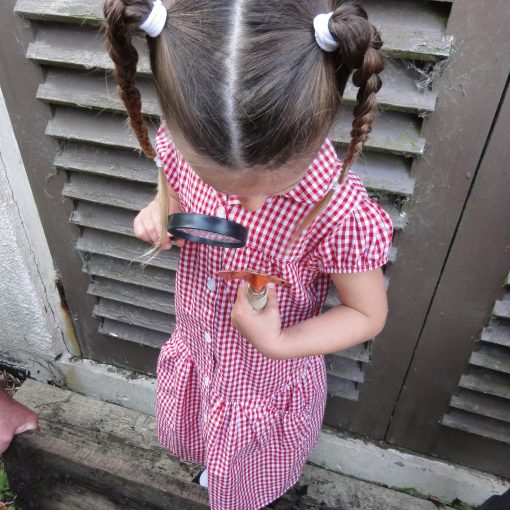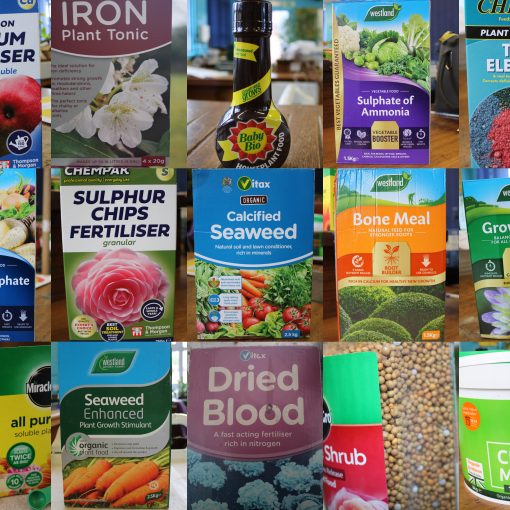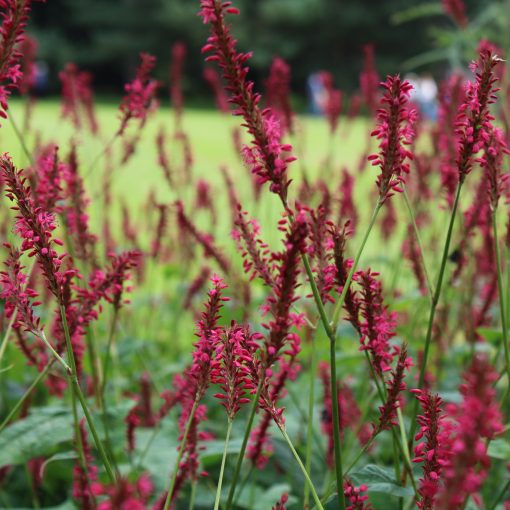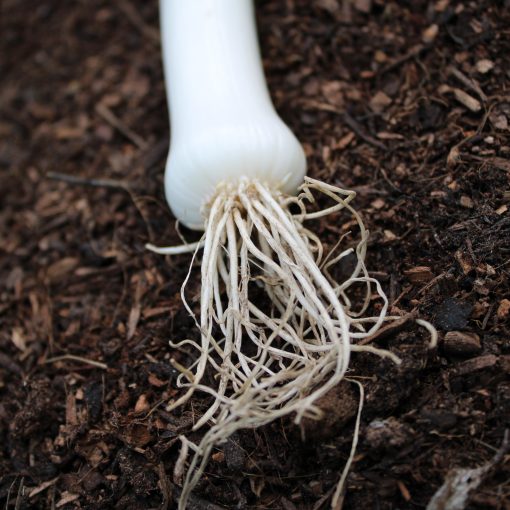Relates to: R2112 (old syllabus) R2103 (old syllabus) and Unit Topic 2 Plant Health (New Syllabus)
Introduction
If you are fairly new to gardening the R2112 module can be overwhelming. Firstly, there is a wide selection of botanical plant names to learn, as well as their decorative merits. THEN we must know how to establish them (Planting and initial care) and maintain them. Students who study with colleges often cover this module September-January when many plants are dormant so can’t even see the real thing. It all seems a virtual world of gardening.
The brain doesn’t seem big enough to then know pests and disease examples for all plant types and how to control them. This is what we are going to focus on here.
There is a whole unit on plant health (R2103) so for this unit (R2112) we are just touching the surface. Remember that pest and disease identification and then control is part of any maintenance schedule no matter what plant it is, so it is important. A lot of money and time would be wasted replacing a tree that had just died of honey fungus disease.
Pests and disease can be quite a dry subject particularly if you are studying them in Winter as you can’t actually go out and see many of them. Although a fascinating topic, it can also be a bit depressing for those gardeners striving for perfection- just last night on Countryfile they were saying that holes in your flowers shows a good range of biodiversity which is true, but then after planting 200 crocus in various places in the garden it is annoying when squirrels dig them all up and eat the corms leaving just the tips scattered around. After all, we want to see plants at their best, not when they are damaged so here’s a nice photo of a perfect flower before we start.
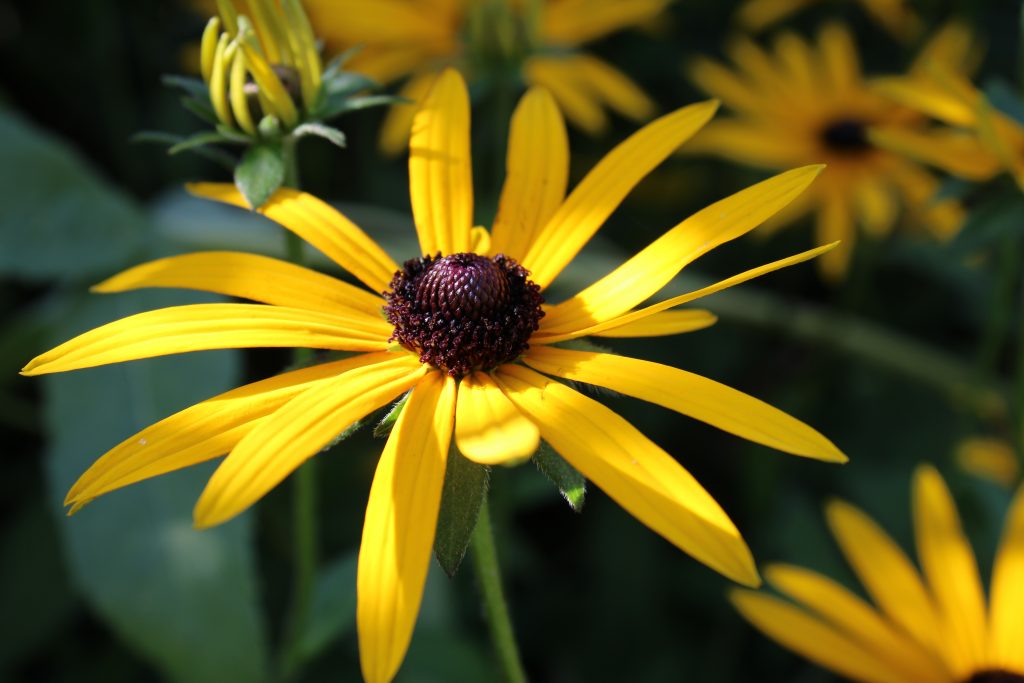
Rudbeckia fulgida var. sullivantii ‘Goldsturm’ – a mouthful to remember but doesn’t need staking and looks fresh and new in late Summer / Autumn.
Definitions of pests and diseases
Plant pest = Any animal that causes unacceptable levels of damage to cultivated plants, making them unsuitable for the purpose for which they were grown. Pests may affect the aesthetic value or crop yield. Pests are mainly insects but also includes molluscs and animals such as birds, mice, moles and rabbits
Plant disease = Diseases are caused by micro-organisms rather than animals. Diseases multiply quickly and are infectious, spreading to other plants quickly. Diseases rely on optimum environmental conditions to proliferate.
Diseases can be classified into 3 main groups: Fungi, Bacteria, Viruses
Methods of Control
Control methods can be divided up into 3 categories:
- Biological
This is using a natural predator to seek out and destroy the pest either by eating it or laying eggs in it. This is what happens in nature when ladybirds eat aphids and why we should encourage biodiversity in the garden. Usually only applicable to control of pests rather than diseases. Although there are some biological control methods for diseases, they are not covered at level 2. - Physical / Cultural
There is a plethora of methods in this category including using physical barriers to prevent the pest reaching the plant, choosing species which are resistant to the pest or disease, correct pruning techniques to prevent disease entry, good hygiene practices to prevent spread, quarantining new plants, good plant husbandry as many diseases occur when a plant is weak and unhealthy. Removal of infected plant parts will slow down the spread of diseases. - Chemical
Chemicals can be sprayed onto foliage or as a root drench and either block breathing pores of insects or poison them after they ingest them via plant sap or eating leaves. Chemical control should always be a last resort and part of an integrated pest management plan. The RHS regularly updates the list of chemicals available for pest and disease control so go to the RHS website for the latest information.
The following tables are a pared-down list of pests, diseases, symptoms and control methods for R2112 which can affect bedding plants (both summer and winter bedding schemes), woody plants, lawns, alpines, aquatic plants.
Bedding Plants:
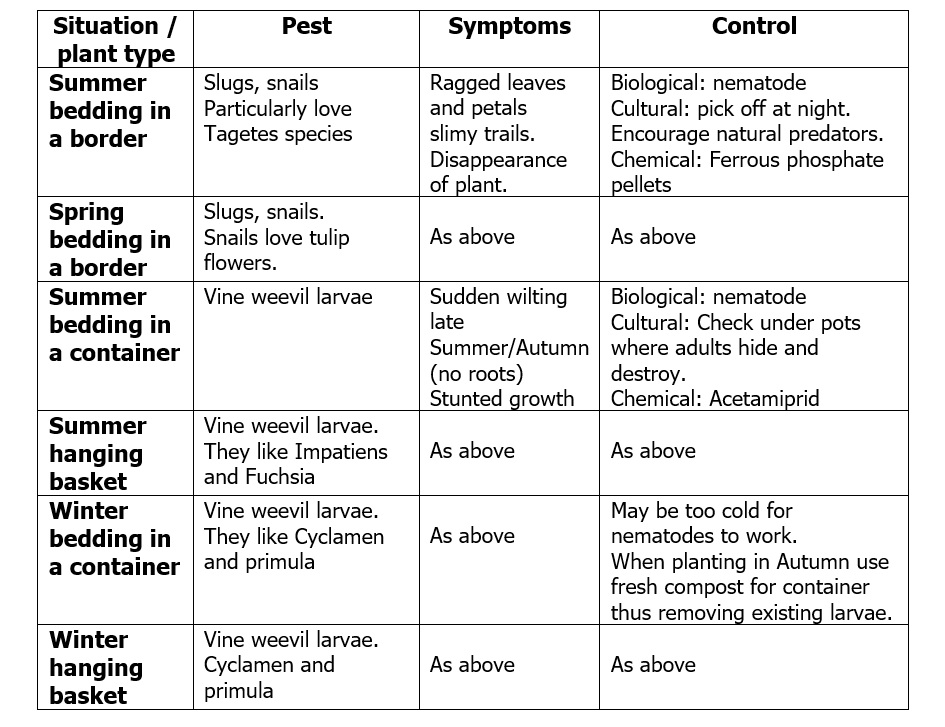
Video to show vine weevil larvae discovered in the soil. Vine weevil larvae feed on roots and are most damaging when in containers: (5) Vine weevil – YouTube

Vine weevil adult which are nocturnal and hide under pots etc. during the day.
Herbaceous plants and bulbs – pests and diseases:
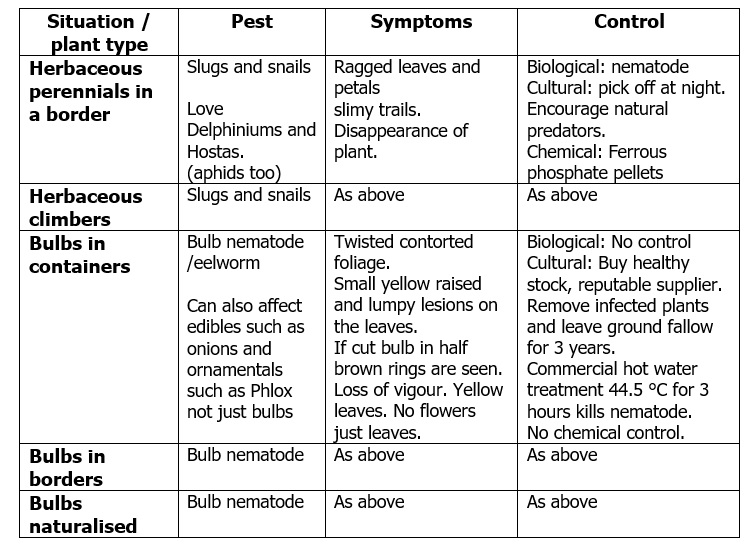
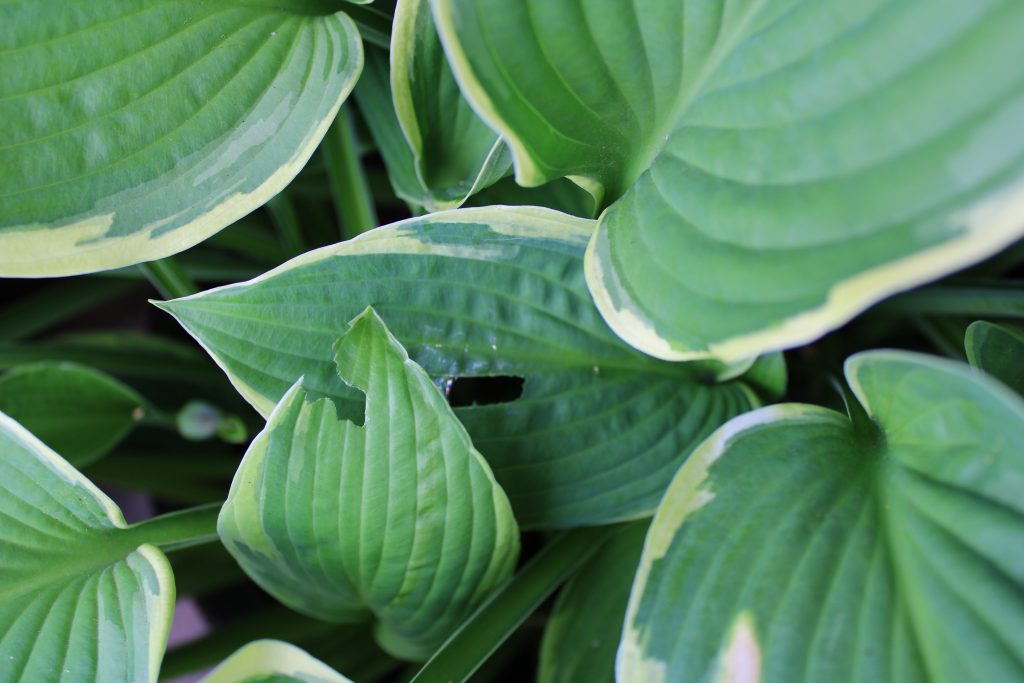
Tell tail signs of slug damage on Hosta. Ragged leaves and slime trails.
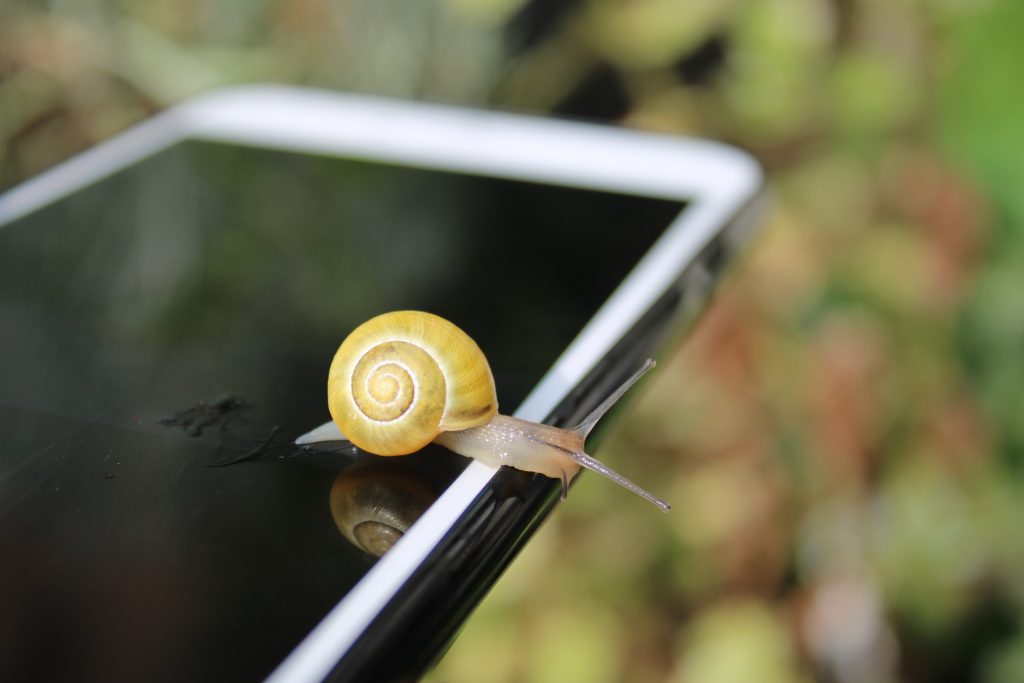
You can see the slime trail left on the phone screen from this snail. Remember that not all slugs and snails are harmful to plants. Some only eat dead plant material. This is the problem with chemical control in that it kills all the slugs and snails. Hand picking is one of the best methods of control as you are targeting the ones actually eating your plants.
Woody Plants – Trees, shrubs, roses:

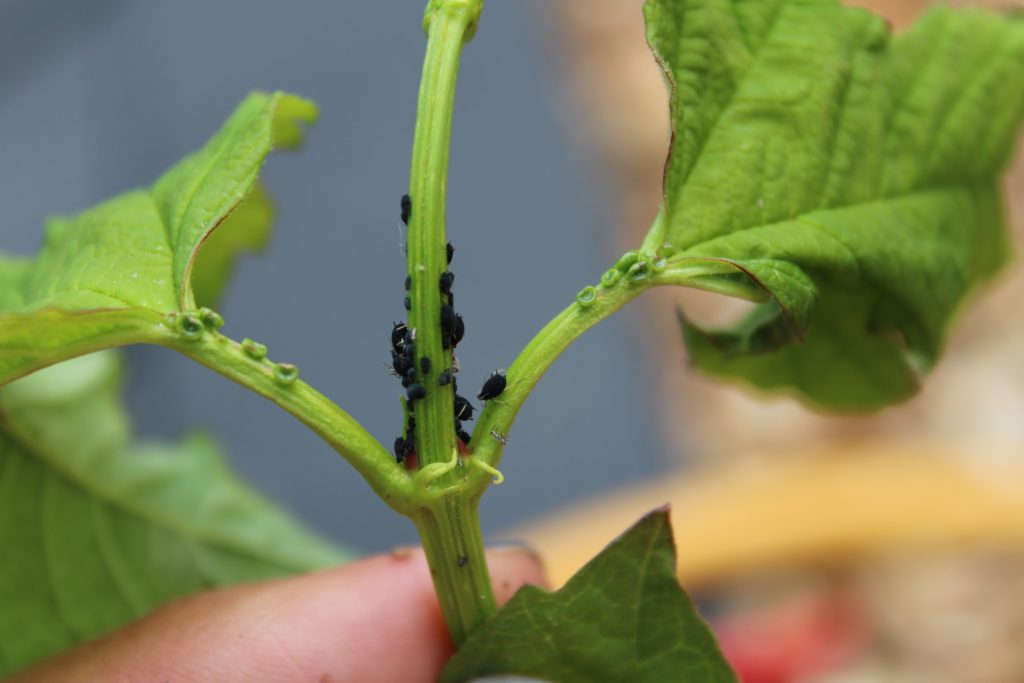
Aphid on Viburnum opulus above
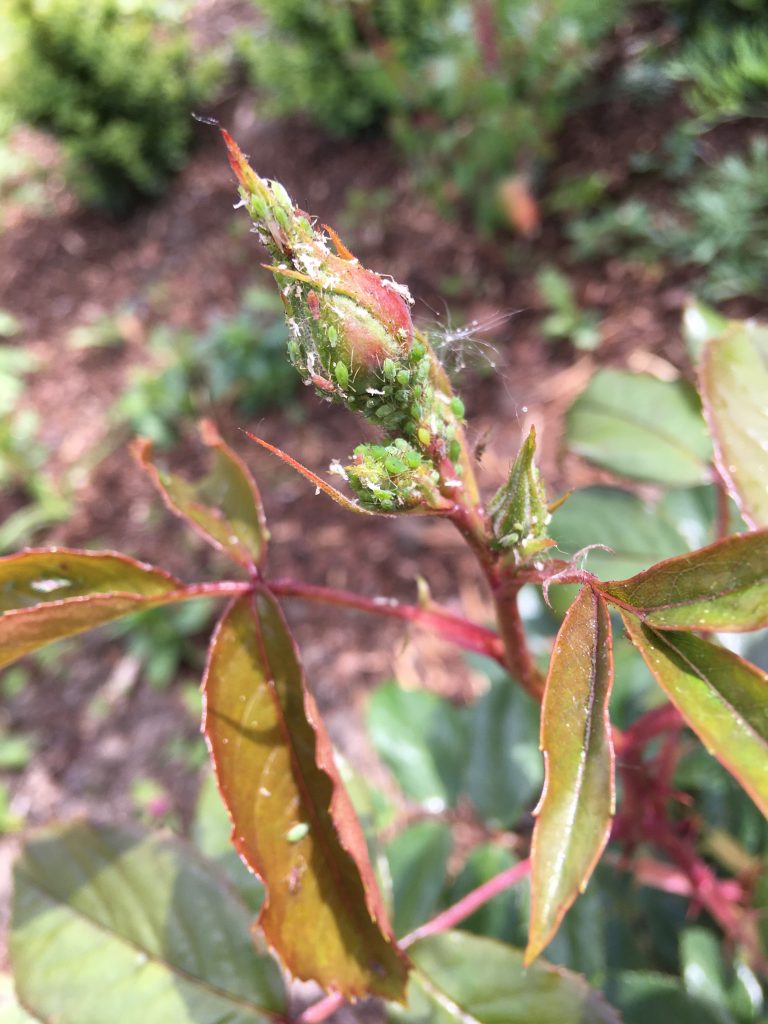
Aphids feed on young tender growth such as buds and shoots of Roses.
Alpines and aquatic Plants:
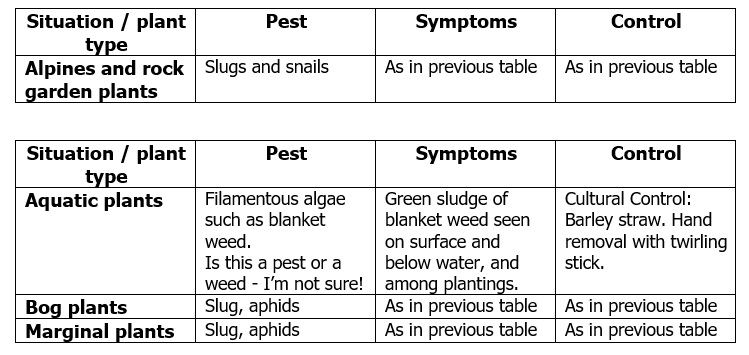
Lawns:
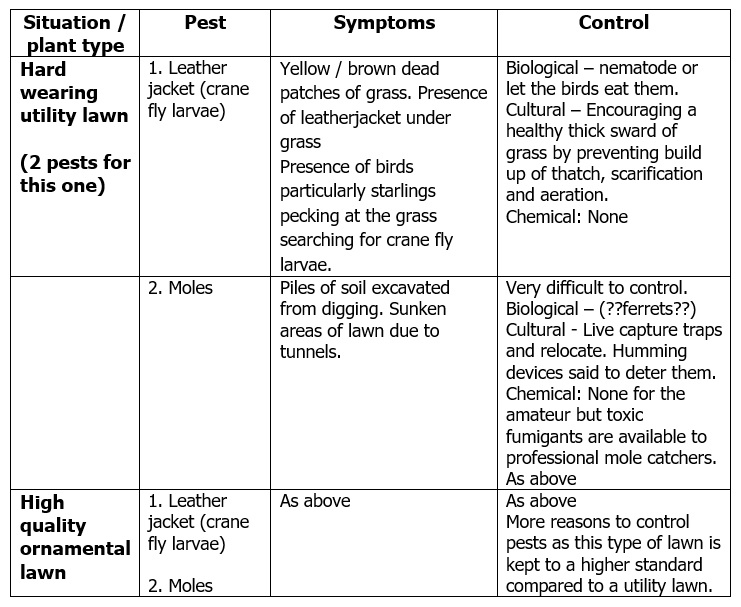
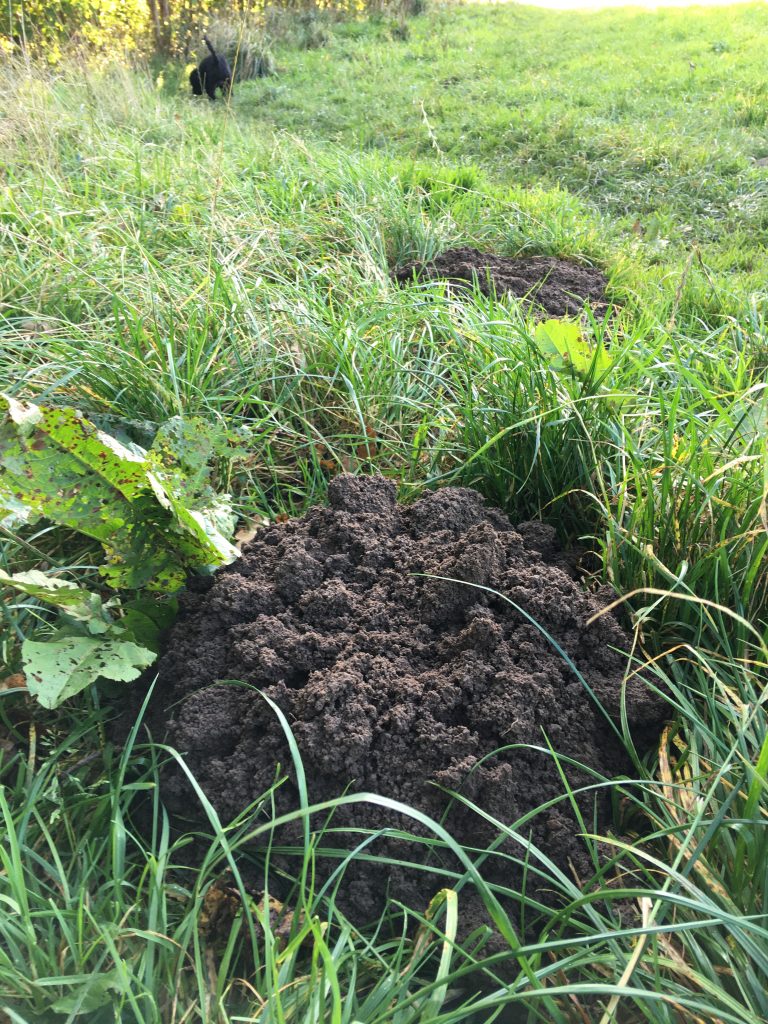
Tell tail signs of mole activity. Heaps of earth excavated and brought to the surface as they burrow looking for worms.
DISEASES
Seasonal bedding
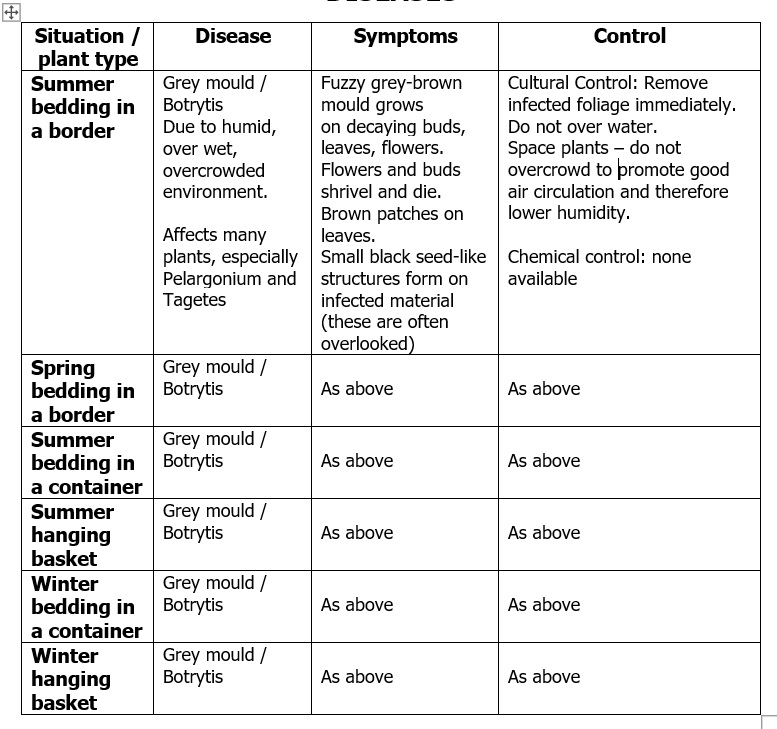
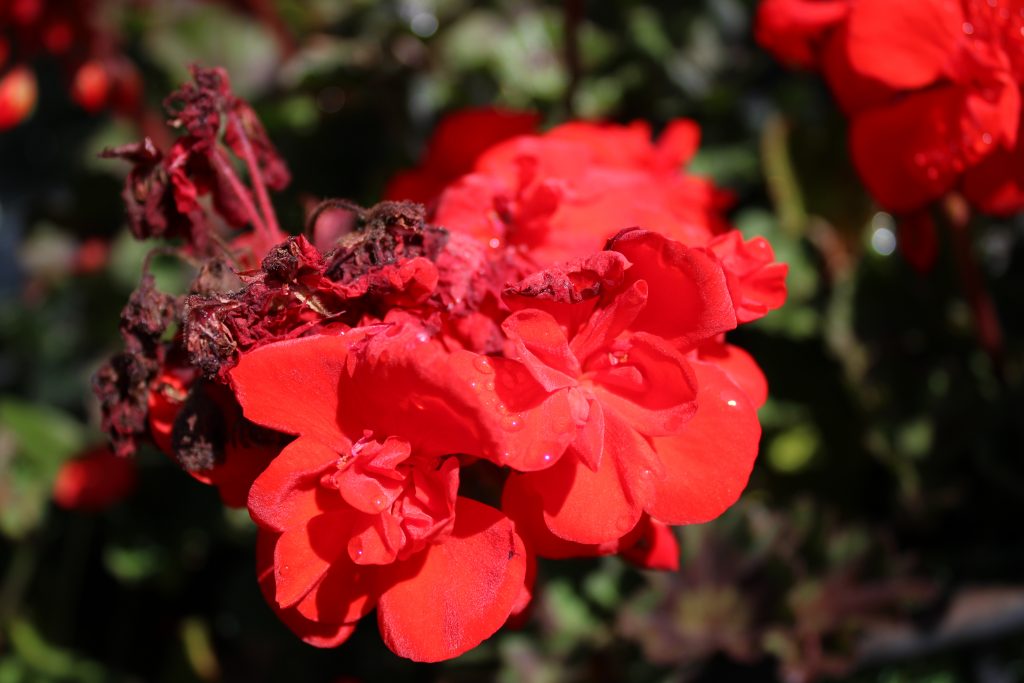
Grey mould on Pelargonium flowers
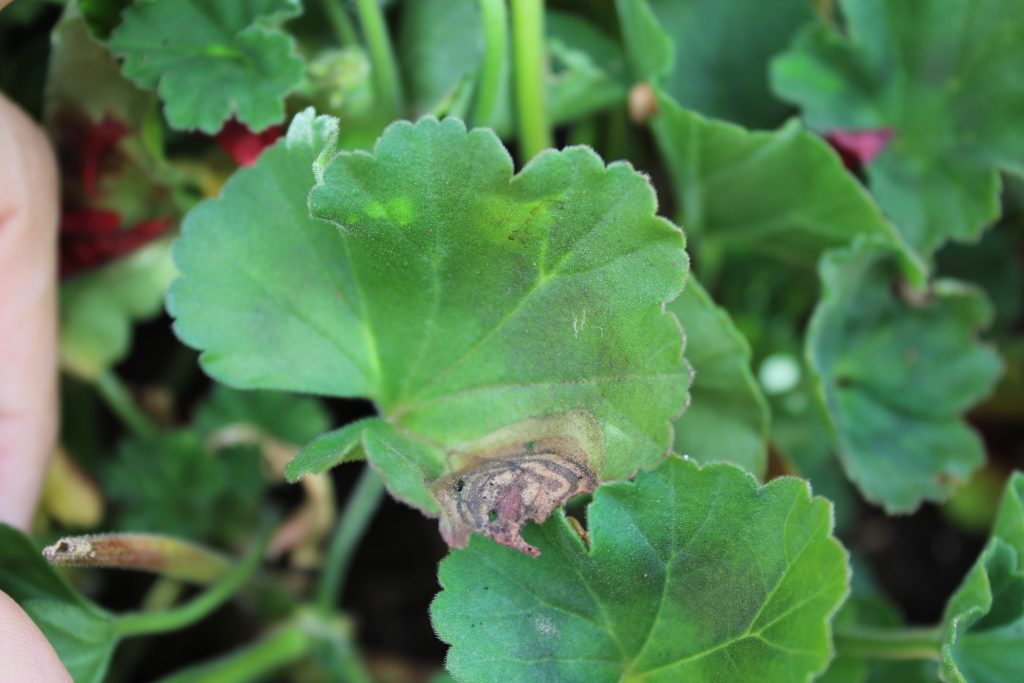
Grey mould on Pelargonium leaves.
Herbaceous perennials and bulbs

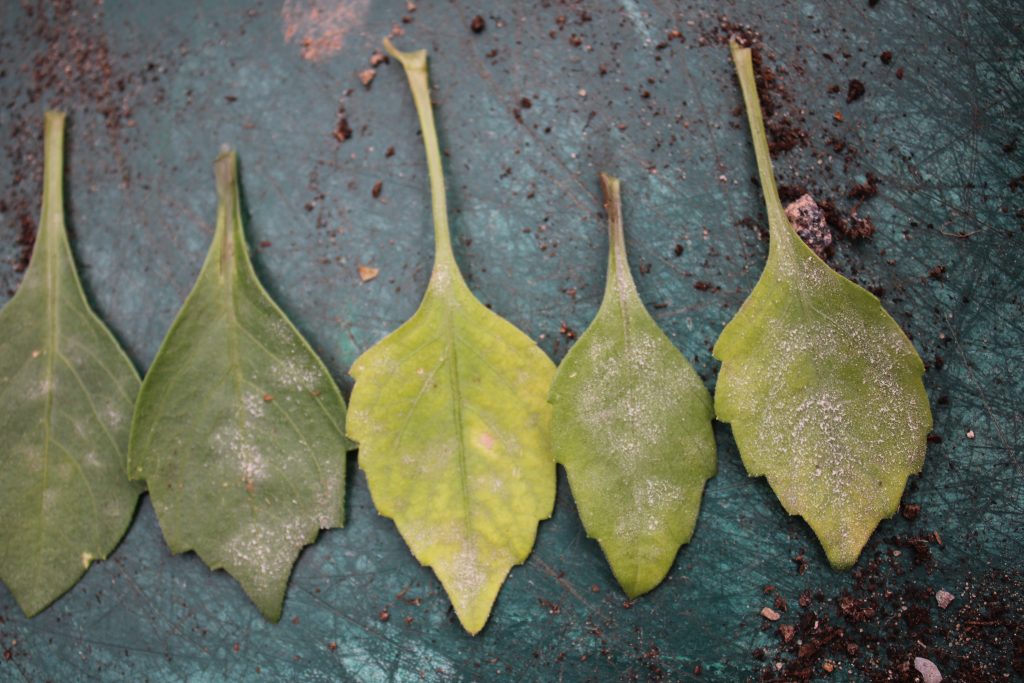
Powdery mildew on Dahlia leaves showing powdery coating and yellowing
Woody Plants – Trees, shrubs and roses
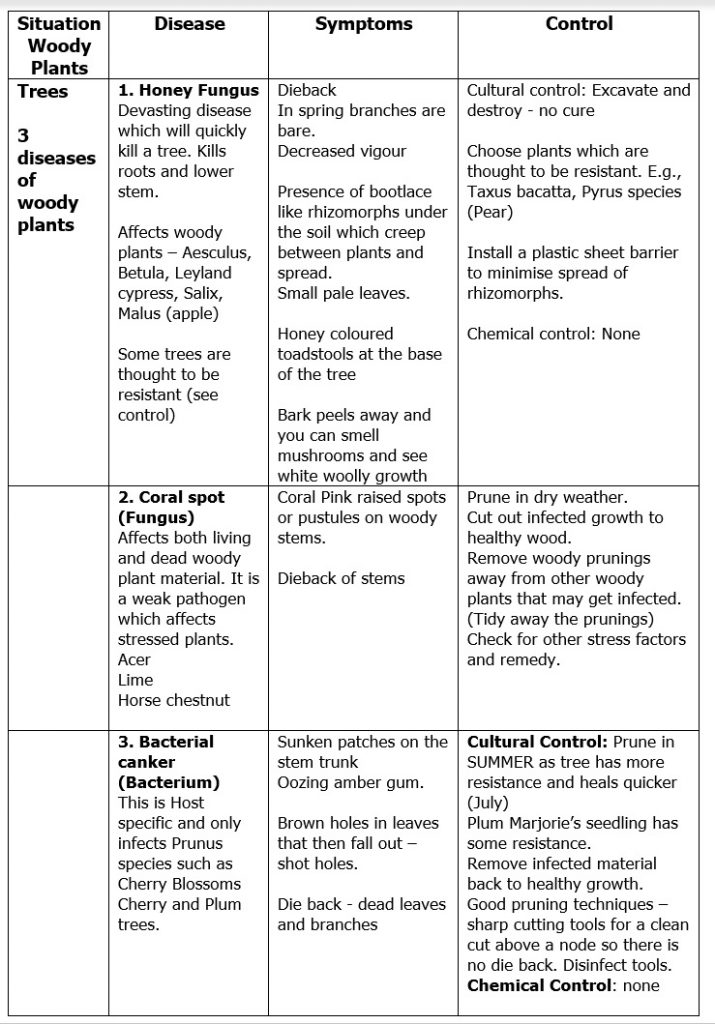
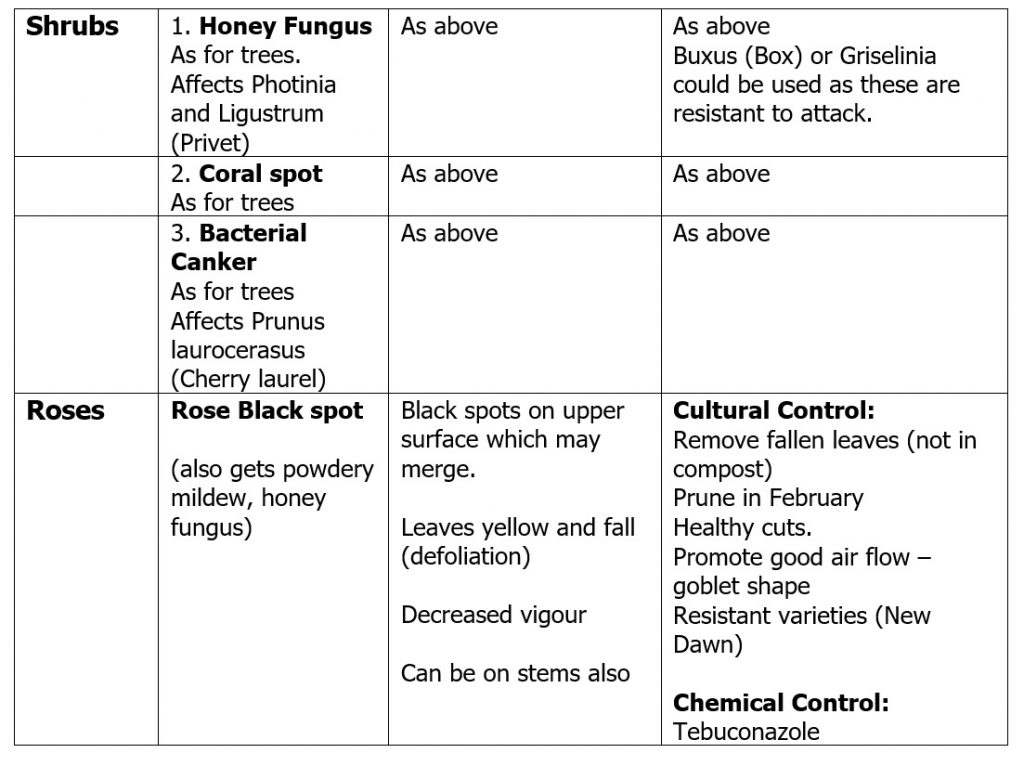

Honey fungus on Ligustrum (Privet hedge) On further investigation Rhizomorphs were found under the soil surface.
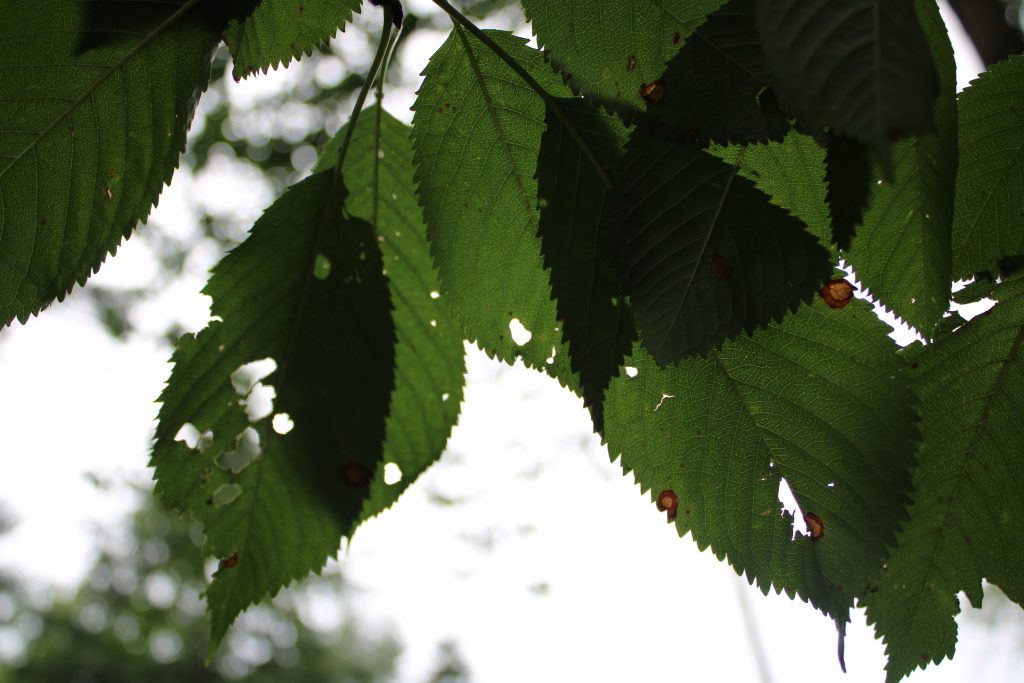
Bacterial canker – Shot hole appearance on prunus species (Cherry blossom tree)
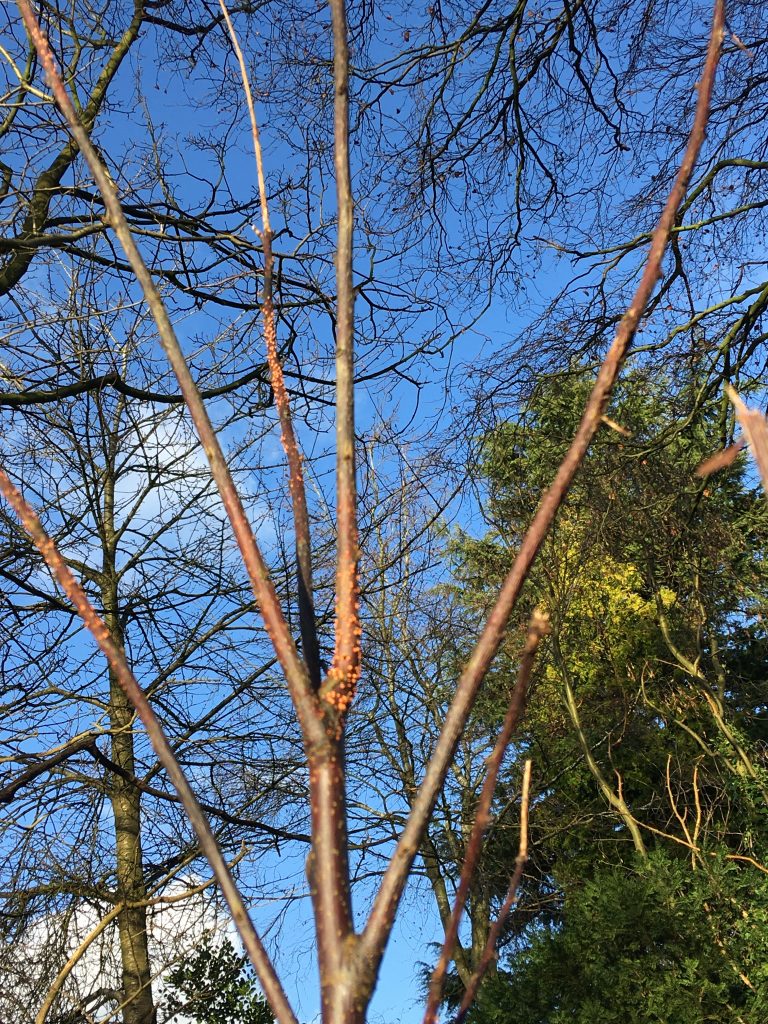
Coral spot on stem at the back which looks dead and also on stem in the foreground which will be dead soon.
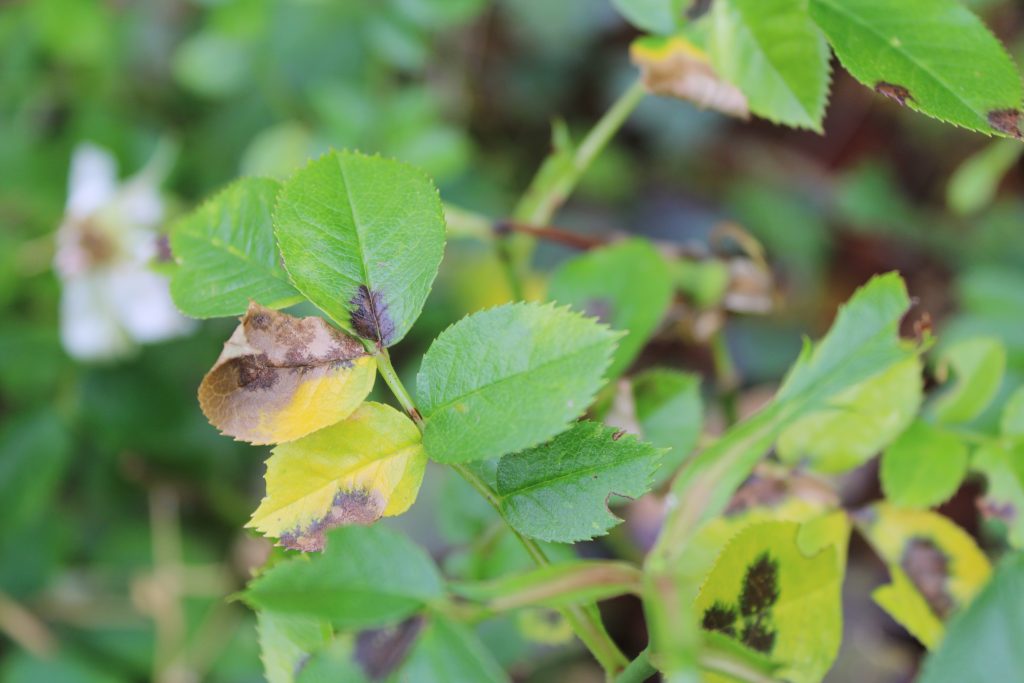
Rose black spot showing black spots and yellowing of leaves which will lead to premature leaf fall.
Alpines and pond plants
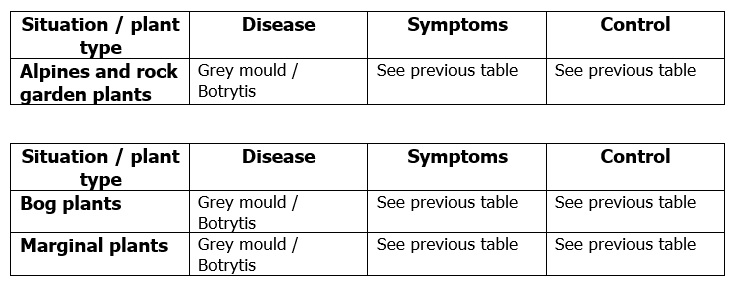
Lawns
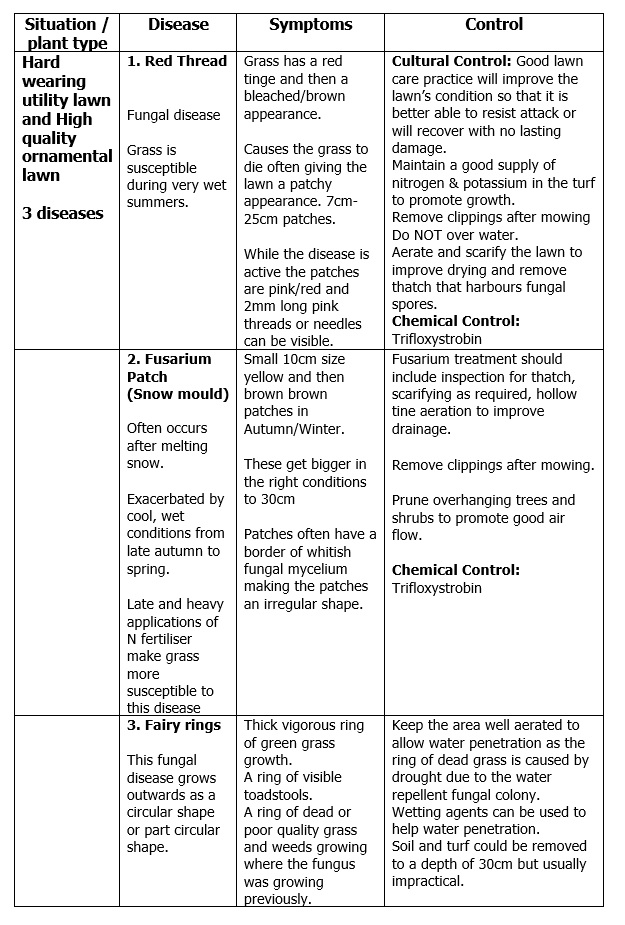
Further Reading: Links to RHS site for detail on pests
Further Reading: Links to RHS site for detail on diseases
- Powdery mildew
- Grey mould
- Honey fungus
- Honey fungus host list
- Bacterial canker
- Coral spot
- Rose black spot
- Fairy Rings
- Snow Mould
- Red Thread
A Final Tip
Here’s a picture of a slug who won’t cause any damage at all:
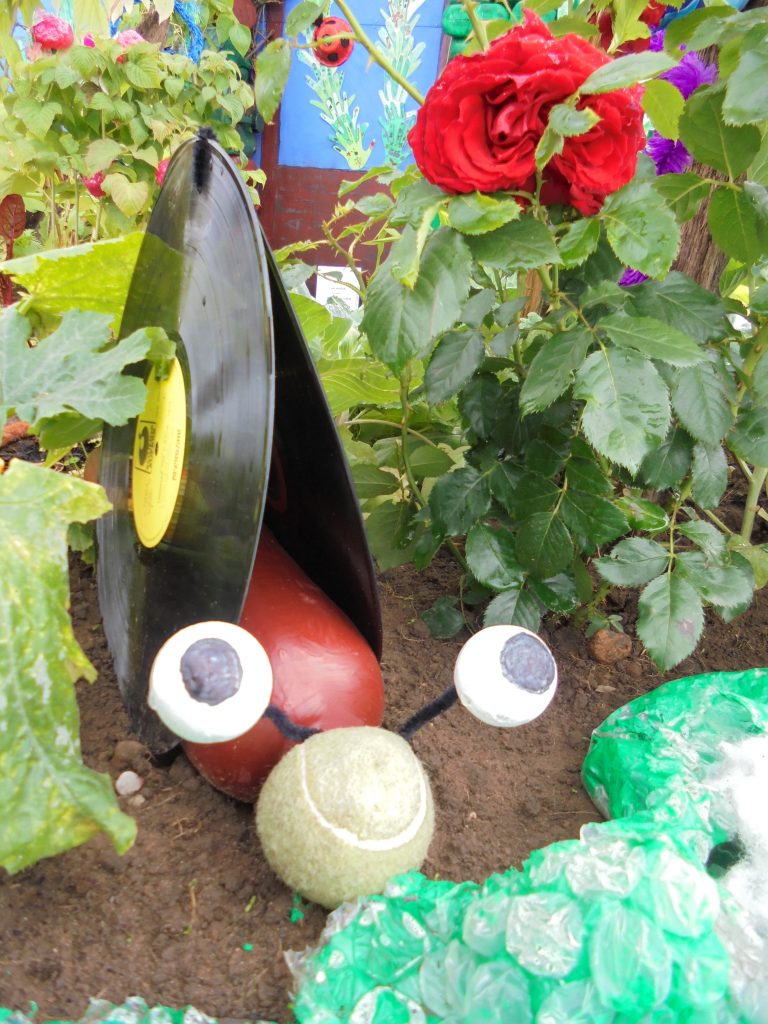
Recycled snail designed by children who created gardens at the RHS Tatton Flower Show


